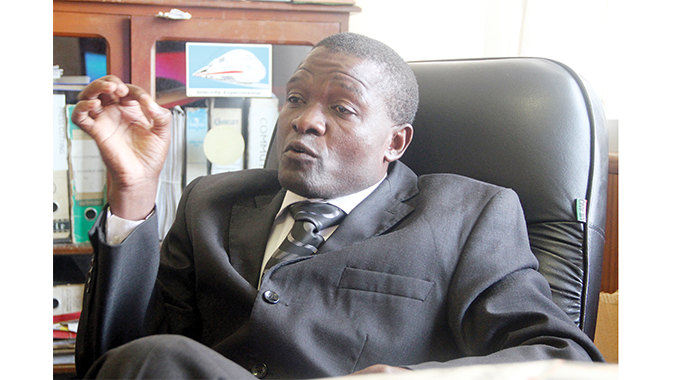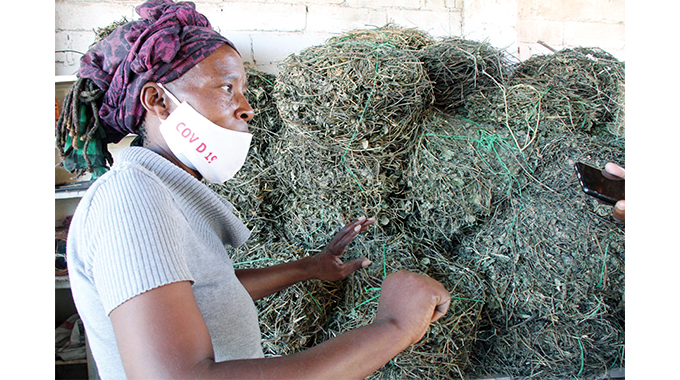Banana farming eases poverty in the face of climate change

Hazel Marimbiza
EVER since banana farming in Honde Valley rural communities evolved from a subsistence crop to a commercial enterprise, lots of women farmers in the area have been pulled out of poverty. Nutrition and food security have also been improved in the area and in Zimbabwe at large.
Banana farming was developed into a commercial enterprise in 2010 by the United States Agency for International Development (USAID) which funded the Zimbabwe Agricultural Income and Employment Development (Zim-AIED) programme that worked with banana farmers in the Honde Valley in eastern Zimbabwe to improve agricultural practices, access to markets and the production of high-quality bananas.
The Food and Agriculture Organisation also implemented the Mupangwa irrigation scheme in the Honde Valley to help farmers improve banana cultivation and link them to markets and other farmers in the region.
Prior to USAID intervention, banana farming in Zimbabwe was a low-income enterprise. Farmers earned less than $US200 per year due to a lack of formal markets and very low harvest yields. Bananas were only grown on a small scale and sold on the roadside to middlemen that took advantage of these small-scale farmers by paying low prices only to sell them for much higher prices.
Where monthly yields used to be only 30 to 50 kilogrammes of bananas, individuals are now able to produce over 1 000 kilogrammes per month. The region has gone from producing 2 000 tons in 2011 to more than 27 000 tons presently, contributing more than $7,5 million to the rural economy each year.
In 2010, Mrs Alice Matanga, a 58-year-old banana farmer, used to be among the women who never realised much profits from her bananas.
Like most of the small-scale farmers USAID supported, Mrs Matanga in 2012.
Over the past five years, Mrs Matanga has transformed her business. Her income has increased exponentially.
Mrs Matanga is very grateful about the profits she gets from her banana plantations.
“I am a single mother who takes care of five children. Joining the project to farm banana was the best decision of my life because now I can take care of my children.”
Mrs Matanga is just one of 600 banana producers who received technical assistance in agriculture techniques that transformed their farming practices and increased their production and incomes.
Because those farmers passed on their knowledge to others in their community, today — two years after USAID’s project ended — there are now several commercial banana farmers.
According to USAID the average banana producer is earning approximately $4 200 per year from 0,4 hectares (1 acre), or 800 banana plants.
The farmers are really doing well considering that Agritex estimates that 684 metric tonnes of bananas are marketed from Honde Valley on a weekly basis, with 45 percent of the bananas going through the formal market channels, while 55 percent go through the informal market channels.
Buyers from all over the country are now a common sight in the valley, with informal buyers paying mainly in cash, although some known customers from the area are given credit terms by the farmers and pay after selling or after three to seven days. Since bananas are perishable and need to be marketed quickly, some farmers have also established relationships with transporters to ferry the produce to urban markets in Harare, Bulawayo and Mutare on agreed terms of being paid after farmers sell their bananas.
According to USAID the project has transformed thousands of farmer’s lives in Honde Valley.
Responding to emailed questions sent by Chronicle, the USAID/Zimbabwe Acting Mission Director Mr Mike McCord, said the USAID/ Zimbabwe project has improved food security and livelihoods of nearly 25 000 people in Honde Valley.
“We trained 600 farmers to grow and sell bananas and when neighbouring farmers saw their success, they began following the lucrative trend. Now several years after the project ended, more than 5 000 commercial farmers from the region are producing bananas for sale in the country. Of those 5 000 farmers, 60 percent are women,” said Mr McCord.
Honde Valley is well known for its rich soils which contribute immensely to ensuring the bananas grow well, but the area also faces climate change challenges which in some cases disrupts the farmers from harvesting a lot of bananas.
Shifting rainfall patterns, successive droughts, and more frequent natural disasters have severely degraded Zimbabwe’s natural resources and reduced agricultural productivity. As food, fuel, and water become scarcer and unreliable, rural women have to work harder and longer to feed their families, depriving them of time for education and income-generating activities. When natural disasters strike, women are among the most vulnerable.
In order to mitigate the effects of climate change and continue supporting the women farmers in Honde Valley, USAID has employed various coping mechanisms.
“We have continued to adapt our programming as we learned more about both the effects of climate change and the importance of empowering women. Our current agricultural activities increase women’s income and access to productive resources and enhance their banana produce,” said Mr McCord.
Besides offering coping mechanisms to women in Honde Valley, USAID has extended its projects to other several rural areas across Zimbabwe in order to fight climate change.
“Since 2013, more than 196 000 rural women from different areas in Zimbabwe have participated in USAID supported economic empowerment and resilience building programmes, such as building small dams, irrigation gardens, and dip tanks. Since 2013, USAID has worked with communities across Zimbabwe to create and repair over 1 900 community assets that boost access to water,” said Mr McCord.
Just last year, USAID announced three new five-year programs to increase resilience and food security in Zimbabwe’s changing climate.
“Our Fostering Agribusiness for Resilient Markets (FARM) programme provides climate-smart training and assistance to over 20 000 households in Manicaland and Masvingo provinces, increasing their productivity and sales, and improving household nutrition and incomes. We work with nearly 500 000 Zimbabweans in Matabeleland North, Masvingo, and Manicaland provinces to increase resilience and reduce the need for humanitarian assistance,” said Mr McCord.
He also indicated that USAID’s agriculture and resilience programs currently support communities in 19 of the most food-insecure districts in Manicaland, Matabeleland North, and Masvingo provinces.
“We carefully target these programs based on food security, nutrition, productivity, and susceptibility to shocks, using analyses like the Zimbabwe Vulnerability Assessment Committee (ZimVAC),” he said.
USAID/ Zimbabwe’s resilience and food security programmes have proved to be beneficial as they are empowering Zimbabwean rural women economically in the face of climate change.











Comments